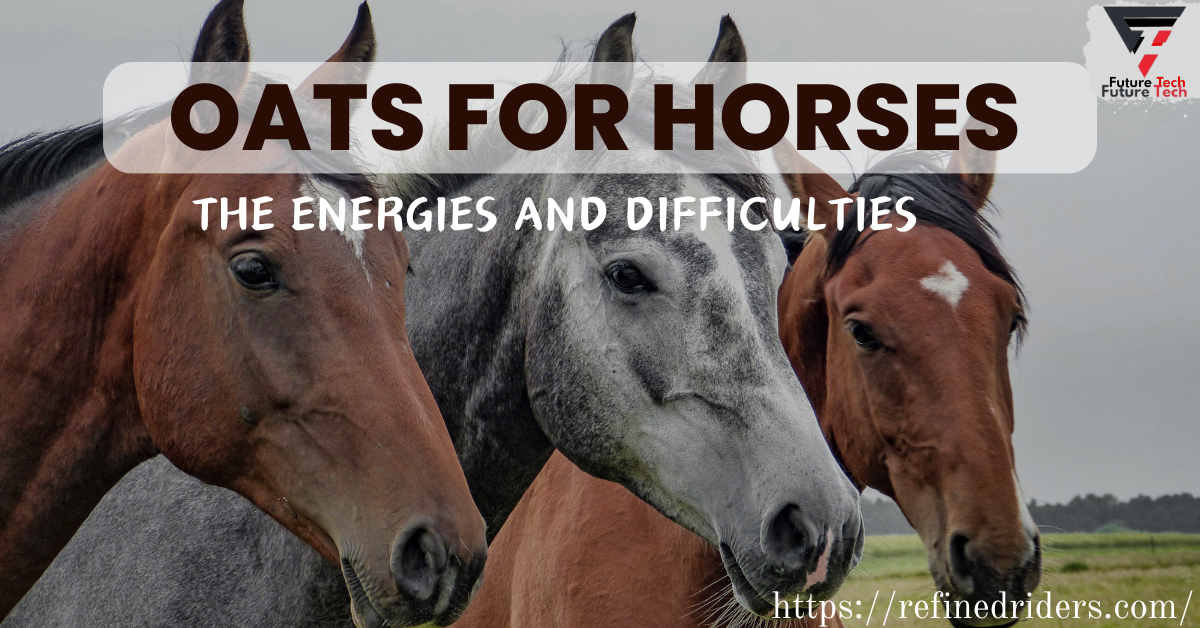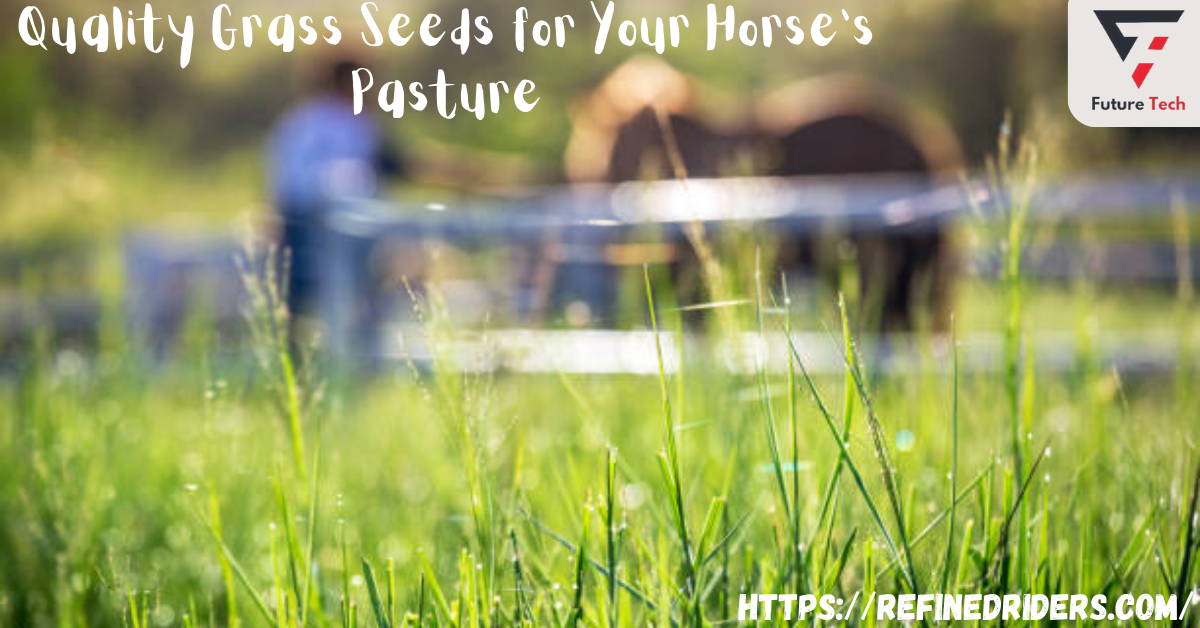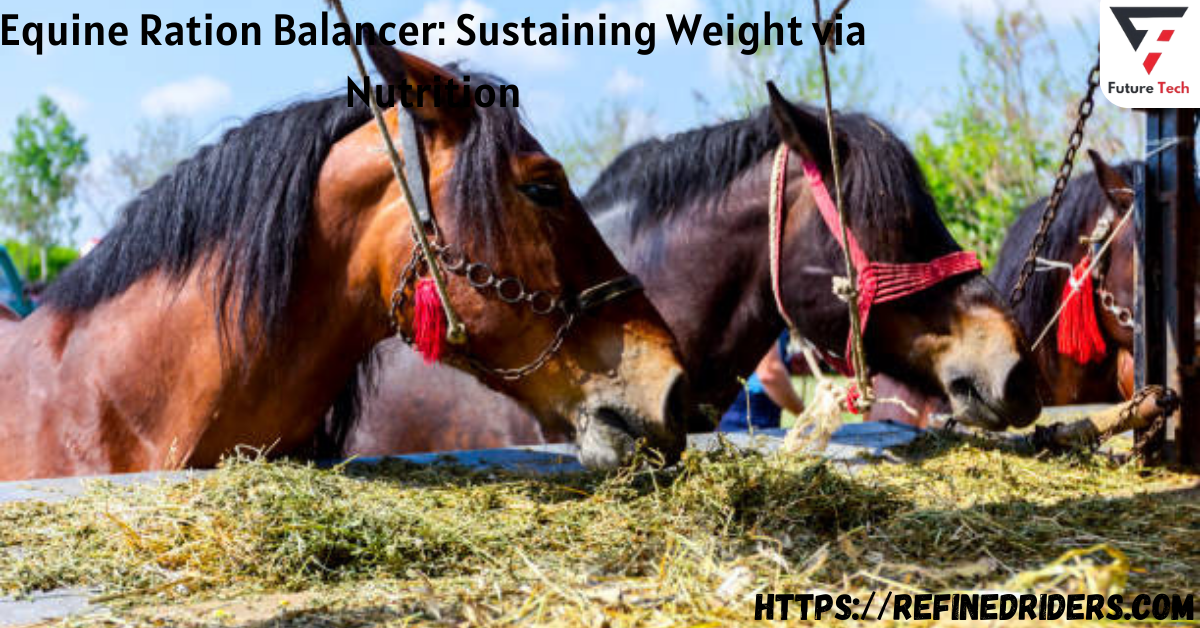For working horses, oats provide an excellent source of quick-release energy (mostly starch and some sugar). Oats include a decent amount of protein (approximately 13%), fiber, and B vitamins. Oats have a highly digestible starch that does not require processing or heating. Therefore, horses can fed entire, uncooked oats.
Oats are the only grain horses can be fed that has easily digestible starch in its raw form. To improve the starch’s digestibility and help avoid hindgut issues, all other grains, including barley, corn, wheat, and rice, should become heat-treated (e.g., boiled, slow-cooked, steamed, steam-rolled, extruded, or micronized).
Importance of Oats:
Oats can occasionally contain beta-glucan, a polysaccharide with various health benefits for horses. Beta-glucan slows the rate at which hard feed passes through the GI tract. Allowing for greater enzymatic digestion of starch in the small intestine and lowering the danger of hindgut acidosis. It also increases the amount of good gut microorganisms, reduces insulin resistance, and minimizes blood sugar oscillations. Oats are a great choice for introducing hard feed to horses that were previously only fed hay or pasture or enticing finicky horses to eat. It is because oats are delicious.
What types of horse oats can I feed to horses?
Entire oats:
This is how they are straight out of the field, still with their husks (or outer casing). This indicates that among all the oats and grains, they have the highest fiber content. Stillborn or older horses with dental issues could find it hard to chew these. So they won’t receive the entire nutritional value. It is advisable to soak these oats overnight before feeding. This kind of oat will sprout in some people.
Bruised cereal:
The oat husk splits to increase digestibility and allow the digestive enzymes to reach the nutrients.
Rolls of oats:
Rolling has a similar impact to bruising. Previously, horse owners would buy whole oats and roll them as needed to maximize storage time.
A crimped oat grain:
The husk disappears, and the surface area increases, improving the digestive fluids’ efficiency.
Cut oats:
Except for crumbs, the oats are thoroughly cut. To get a cleaner finished product, the ends of the grain are chopped off.
Broken oats:
It is a labor-intensive procedure that needs the oat husk and kernel broken. As a result, they are slightly easier to digest, but their shelf life seems limited.
Raw oats:
These plants shed their loose husks when they’re successfully harvested. It improves digestion while lowering the fiber content. They also include more oil than regular oats and a third more easily digested protein and calories. Like porridge oats, our naked oats are rolled gently under heat.
Nutritional Benefits of Oats for Horses
Oats include around 13% protein, but that protein lacks lysine. This amino acid is vital by all horses, notably growing horses, pregnant and lactating mares, and working horses. As a result, the protein is regarded as being of a low caliber. Not just oats but ALL cereal grains fall under this category. This disadvantage can be overcome by mixing lucerne and lupins—both excellent lysine sources—with the oats. It will raise lysine content and enhance the meal’s overall amino acid balance.
The starch in raw oats has a digestibility of approximately 90%. On the other hand, the digestibility of corn, wheat, and barley is approximately 35% (unless they are heat-treated, in which case it rises to approximately 90%, similar to raw oats). Oats have the largest fiber content and the lowest sugar and starch content of all the cereal grains fed to horses. As a result, they are the least likely to induce insulin spikes, blood sugar changes, and hindgut and behavioural problems.
When to Feed Oats to Your Horse
A horse is more likely to require a concentrated calorie supply and high levels of glycogen to replenish stores in its muscles and liver when it works more. Without a more concentrated carbohydrate supply, endurance, stamina, and speed may suffer even when maintaining weight and muscling well on diets solely of hay and grass. Add oats to your horse’s daily diet and a forage-focused feed balancer that helps maintain a balance between grass and hay.
Using a feeding guideline of no more than 1 kilogram in a single feed is very effective, and a ratio of 2 parts high fiber fast soak feed to 1 part oats. If you feed 200 grams of oats, for instance, be sure to also provide 400 grams of a high-fiber meal, like molasses, sugar beet, or hay pellets, in addition to the 200 grams of oats. Therefore, you have two options: feed 200 grams of oats with 400 grams of hay pellets or beet pulp, or feed 200 grams of oats with 200 grams of sugar beet and 200 grams of raw oats. It is made clearer by the table below.
WHY SOME HORSES DO NOT FIT IN WELL WITH OATS?
Allergy or sensitivity to the protein in oats (though barley and wheat are more likely to cause this since they contain gluten, a common allergen).
The oats’ stiff seed coatings, or hulls, are difficult for the horse to eat. Giving crushed or steam-rolled oats instead of whole oats by soaking, steaming, or heating them for a few hours before feeding them out is preferable.
Amount of feed oats. Why is volume important?
The pancreas of horses produces amylase enzymes necessary for the small intestine to break down starch. Since horses typically eat a low-starch diet, they only have very small amylase levels compared to other mammals. Additionally, the quantity of amylase that each horse produces varies. Horses with higher amylase production show greater tolerance to oats (and other grains) than horses with lower amylase production.
If a horse consumes oats (or any other grain) and becomes colicky or uncomfortable. Searches for or develops ulcers and hindgut issues, or becomes irritable and difficult to handle or ride. It is likely only producing small amounts of amylase. It isn’t absorbing the starch in the diet well (assuming the issues aren’t due to parasites, infection, injury, or some other source). If so, cutting back on the number of oats—or other grains—supplied or eliminating them from the diet should address the issue.
Alternatively, the small intestinal enzymatic digestion of the oats (or other grain) may be better using horse supplements containing digestive enzymes (including amylase). Grain that enzymes in the small intestine cannot break down will enter the hindgut undigested if a horse is fed more oats or other grains. Acid-producing microflora will quickly ferment there, lowering the pH of the hindgut and causing gut dysbiosis (an imbalance between pathogenic and beneficial gut microflora), hindgut lining damage, pain, inflammation, ulceration, scours, colic, irritable and excitable behavior, and even a serious illness such as laminitis.
How many oats do you feed to a horse each day?
Follow this strategy to support protein levels and glycogen loading while also giving minerals and vitamins that correspond to hay and grass:
Feed a little meal following each work shift. After work, we find that 50 grams of essential amino acids combined with 100 grams of beet pulp and 50–100 grams of naked oats (porridge) is ideal for an average 500 kg horse. This combination will replenish glycogen stores in the liver and muscles. as the oats are a low-glycaemic, fast-releasing carbohydrate source, and the beet pulp is a slow-releaser. Feed this after work for optimal results, as it helps the body replenish its glycogen stores. If your horse needs more feed, keep to a 50:50 beet pulp to oats ratio and boost the amount to 300 grams each.
You could utilize Pea Protein or Topline Plus as an alternative to Essential Amino Acids. Taking 50 grams of critical amino acids after work and 100 grams of pea protein in the daily bucket meal with the balancer provides a decent range of vital amino acids. You can opt to perform one or both, depending on how active your horse is and the possible quantities of protein in the hay and grass they consume. If analysis indicates that the hay provided is insufficient in protein for moderate labor. Add 100 grams of Pea Protein or Topline Plus to the bucket feed each day. Plus, horses appear to enjoy the taste.
Summary:
Oats are a nutritious and delicious grain for horses, providing quick-release energy, protein, fiber, and B vitamins. They have a highly digestible starch that doesn’t require processing or heating, making them suitable for feeding entire, uncooked oats. Oats can contain beta-glucan, which slows the rate of hard-feed digestion, reducing hindgut acidosis and promoting gut microorganisms. There are various types of horse oats, including entire, bruised, rolls, crimped, cut, broken, and raw oats. Oats have a 90% digestibility, making them the least likely to induce insulin spikes, blood sugar changes, and hindgut issues.
Oats are a crucial component of a horse’s diet. Providing a concentrated calorie supply and high levels of glycogen to replenish muscle and liver stores. A forage-focused feed balancer can help maintain a balance between grass and hay. To ensure a balanced diet, feeding oats to horses should be balanced with a high-fiber meal, such as molasses, sugar beet, or hay pellets. However, some horses may not fit well with oats due to sensitivity or allergy to the protein or stiff seed coatings. The amount of oats fed should be based on the horse’s amylase enzyme production and the horse’s tolerance to grains.




